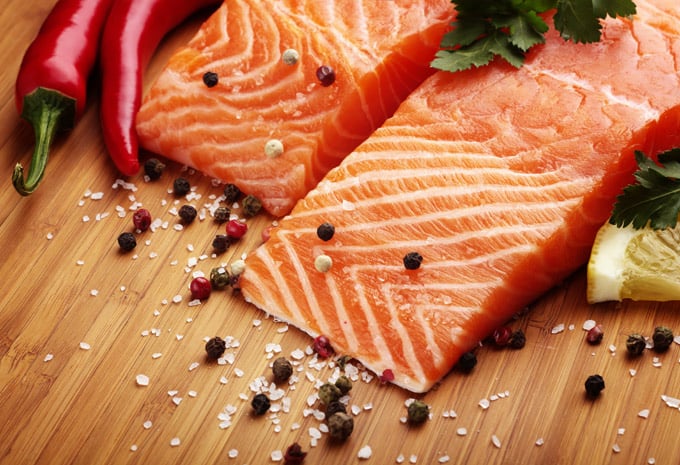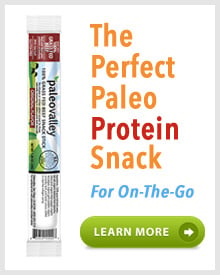
8 Of The Most Nutrient Dense Foods On The Planet
Our country’s widespread soil depletion and the decline in dietary diversity has led to a dramatically decreased nutrient intake for many Americans. In fact, according to a 2011 report that approximately 9/10 Americans fall short of the Recommended Daily Intake (RDI) requirements for certain nutrients. This is a big deal, because the RDI was established as a bare minimum to prevent disease. Therefore, if your health goals go beyond disease prevention (you want to feel your very best), you need to not only meet the RDI, but exceed it. This is where most Americans, and even some paleo dieters, fall short.
To help make certain that you don’t become one of these statistics, it’s in your best interest to actively focus on maximizing the nutrient density of your diet everyday. This means not only eating paleo-approved foods, but eating the most nutrient dense, paleo foods available! To help you achieve this goal, here is a list of 8 of the most nutrient dense foods on the planet from an article entitled, 11 of The Most Nutrient Dense Foods on The Planet by Authority Nutrition. Read the full article complete with references here.
1. Salmon
Not all fish is created equal. Salmon, and other fatty types of fish, contain the greatest amount of Omega-3s.Omega-3’s are extremely important for the optimal function of your body. They’re linked to improved wellbeing and a lower risk of many serious diseases. Although salmon is mainly prized for its beneficial composition of fatty acids, it also packs a massive amount of other nutrients. A 100 gram piece of wild salmon contains 2.8 grams of Omega-3s, along with lots of high quality animal protein and a ton of vitamins and minerals… including large amounts of Magnesium, Potassium, Selenium and all the B-vitamins.
It is a good idea to eat fatty fish at least once or twice a week, to get all the Omega-3s that your body (and brain) desperately need. Studies show that the people who eat fatty fish regularly have a lower risk of heart disease, dementia, depression and a plethora of common diseases. Also, let’s not forget the fact that salmon tastes awesome and is fairly simple to prepare. It also tends to make you feel full with relatively few calories. If you can, choose wild salmon instead of farmed. It is more nutritious, has a better Omega-6:Omega-3 ratio and is less likely to contain harmful compounds .
2. Kale
Of all the super healthy leafy greens, kale is the king. It is loaded with vitamins, minerals, fiber, antioxidants and various bioactive compounds.
A 100 gram portion of kale contains:
• 200% of the RDA for Vitamin C.
• 300% of the RDA for Vitamin A (from beta-carotene).
• 1000% of the RDA for Vitamin K1.
• Large amounts of Vitamin B6, Potassium, Calcium, Magnesium, Copper and Manganese.
This is coming with 2 grams of fiber, 3 grams of protein and only 50 calories.
Kale may be even healthier than spinach. Both are super nutritious, but kale is lower in oxalates, which are substances that can bind minerals like calcium in the intestine, preventing them from being absorbed. Kale (and other greens) are also loaded with various bioactive compounds, including Isothiocyanates and Indole-3-Carbinol, which have been shown to fight cancer in test tubes and animal studies.
3. Seaweed
The sea has more than just fish… it also contains massive amounts of vegetation.
Usually referred to as “seaweed,” there are thousands of different plant species in the ocean, some of which are incredibly nutritious. In many cases, seaweed is even more nutritious than vegetables from the land. It is particularly high in minerals like Calcium, Iron, Magnesium and Manganese. It is also loaded with various bioactive compounds, including phycocyanins and carotenoids. Some of these substances are antioxidants with powerful anti-inflammatory activity.
But where seaweed really shines is in its high content of iodine, a mineral that is used to make thyroid hormones. Just eating a high-iodine seaweed like kelp a few times per month can give your body all the iodine that it needs. If you don’t like the thought of eating seaweed, then you can also get it as a supplement. Dried kelp tablets are very cheap and loaded with iodine.
4. Garlic
Garlic really is an amazing ingredient. Not only can it turn all sorts of bland dishes into delicious treats, it is also incredibly nutritious. It is high in vitamins C, B1 and B6, Calcium, Potassium, Copper, Manganese and Selenium. But garlic is also loaded with another incredibly important nutrient called Allicin, which is the active ingredient in garlic.
There are many studies on the health benefits of allicin and garlic. It has been shown to lower blood pressure and total and LDL cholesterol, while raising HDL… which should lead to a reduced risk of heart disease down the line. It also has various cancer-fighting properties. Studies show that the people who eat a lot of garlic have a much lower risk of several common cancers, especially cancers of the colon and stomach. Garlic is also very potent at killing pathogens like bacteria and fungi.
5. Liver
Humans and pre-humans have been eating animals for millions of years. However… back in the day, we didn’t just eat the muscles like we do today. Compared to the organs, muscle meat is nutritionally poor. There are even accounts of modern hunter-gatherers selectively eating the organs, then feeding lean muscle meat to the dogs.
Out of all the organs, liver is by far the most nutritious. The liver is a remarkable organ with hundreds of functions related to metabolism. One of its functions is to store important nutrients for the rest of the body.
A 100 gram portion of beef liver contains (30):
• 1176% of the RDA for Vitamin B12.
• Over 50% of the RDA for Vitamins B6, B5, Niacin and Folate.
• 201% of the RDA for Vitamin B2.
• 634% of the RDA for Vitamin A.
• 714% of the RDA for Copper.
• Over 30% of the RDA for Iron, Phosphorus, Zinc and Selenium.
• 29 grams of high quality animal protein.
6. Sardines
Sardines are small, oily fish that can be eaten whole. This includes bones, skin, organs, brains and everything. Given that the organs are usually the most nutritious parts of an animal, it is not surprising to see that whole sardines are incredibly nutritious.They contain a little bit of almost every nutrient that the body needs and are pretty close to being perfect from a nutritional standpoint. Like other fatty fish, they’re also very high in heart-healthy Omega-3s.
7. Blueberries
When it comes to the nutritional value of fruits, blueberries are in a league of their own.
Although they’re not as high in vitamins and minerals as vegetables (calorie for calorie), the antioxidant content is where they really shine. They are loaded with powerful antioxidant substances, including anthocyanins and various phytochemicals, some of which can cross the blood-brain barrier and exert protective effects on the brain.
Several studies have examined the health effects of blueberries in humans. One study found that blueberries improved memory in older adults. Another study found that obese men and women with metabolic syndrome had a lowered blood pressure and reduced markers of oxidized LDL cholesterol, when they added blueberries to their diet. This finding makes sense, given that eating blueberries has been shown to increase the antioxidant value of the blood. Then multiple studies in test tubes and experimental animals suggest that blueberries can help fight cancer.
8. Egg Yolks
Egg yolks have been unfairly demonized because of their cholesterol content. But the studies actually show that dietary cholesterol isn’t something you need to worry about, because cholesterol in the diet doesn’t raise the “bad” cholesterol in the blood. What we’re left with is one of the most nutritious foods on the planet. Whole eggs are so nutritious that they’re often referred to as “nature’s multivitamin.”
Egg yolks are loaded with vitamins, minerals and various powerful nutrients. They’re high in Lutein and Zeaxanthine, antioxidants that can protect the eyes and reduce your risk of eye diseases like cataracts and macular degeneration. Eggs are also loaded with choline, a brain nutrient that about 90% of people aren’t getting enough of. Eggs also contain high quality protein and healthy fats. Several studies suggest that they can help you lose weight.
Really… whole eggs are an amazing food. The yolk is where almost all the nutrients are found, throwing it away is the absolute worst thing you can do. Also let’s not forget that eggs are cheap, taste amazing and are super easy to prepare. If you can, get pastured and/or Omega-3 enriched eggs. They’re healthier and more nutritious than most “conventional” supermarket eggs.
My take on this:
One of the most common mistakes I see among paleo dieters today is too narrow a focus on what they are NOT eating (gluten, dairy, sugar, etc.) with too little focus on the nutrient density of what they ARE eating. This is why this list is so important. Make a goal to include at least one of these foods into your diet every day. Also, always be sure that you’re opting for the highest quality version of these foods: organic blueberries, grass-fed liver and pasture-raised eggs. The nutrient profiles and their benefits can be greatly diminished when quality is not considered.
I know it may seem crazy to beginners, but incorporating grass-fed liver into your diet (at least once a week) is one way to dramatically increase your nutrient intake. Honestly, it gives me a jolt of energy like almost nothing else I eat! If you’re simply not open to consuming organs yet, be sure to keep your eyes peeled for our soon- to- be- offered Paleovalley Organ Energy Supplement. You can get all of the benefits of eating liver every day, without having to deal with the flavor 😊






